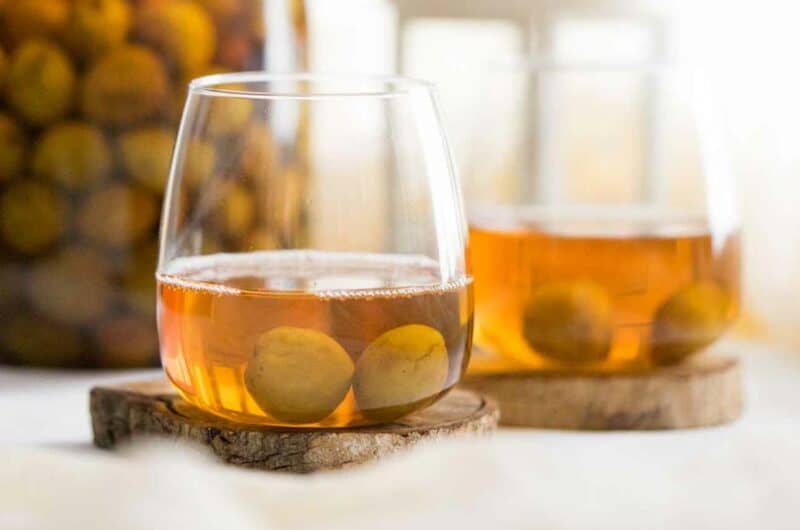It’s the plum season, and there are plums everywhere. Maybe you’ve got a ton of plums in your pantry, and you don’t know what to do with them. You could make some plum jam or whip up a plum crumble cake. Or you could make plum wine.
Yes, plum wines are a thing. And lucky for you, we know how to make them. All we need are a few supplies and a recipe. And we’ve got just the recipe.
Why We Like This Plum Wine Recipe
The recipe we’re using for this demonstration is a Jack Keller clone brewed by the YouTube channel, Doin’ the Most.
We like this recipe because it’s simple to follow. The instructor is also helpful, giving us handy hacks and tricks to get around Jack Keller’s recipe. It’s also helpful that the instructor uses simple brewing equipment instead of fancy brewing systems. It’s the simplicity for us.
With that being said, grab your coats; we’re going shopping!
Supplies: What You Will Need?
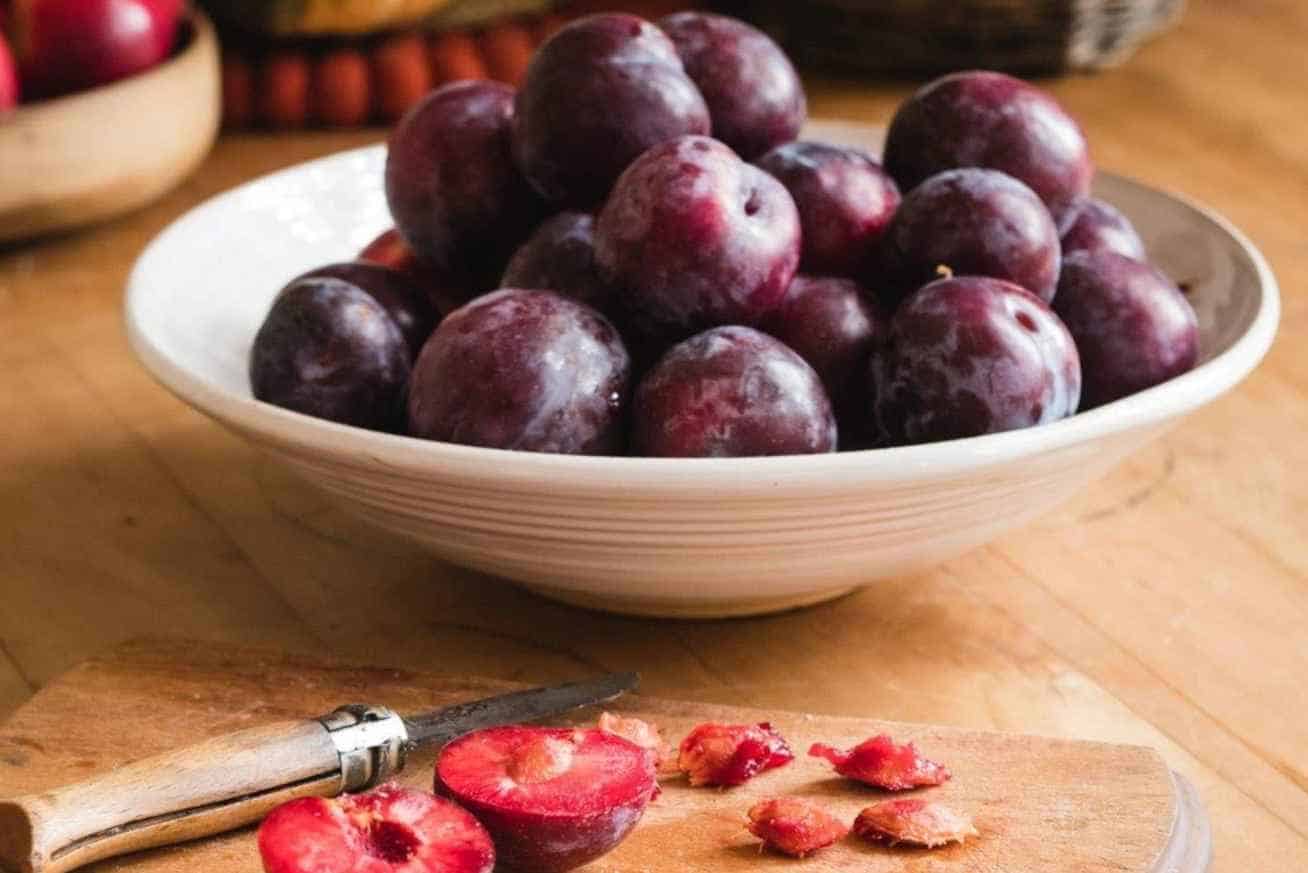
Do you have your shopping carts ready? Good, let’s talk supplies.
Ingredients-wise, you’ll need the following:
- 6 lbs Fresh Plums
- 12oz White Grape Concentrate
- 1 lb 10oz of Granulated Sugar
- 1 Gallon of Water
- 1 tsp Powdered Pectic Enzyme (Pectinase)
- ⅛ tsp Grape Tannin
- 1 tsp of Yeast Nutrient (Diammonium Phosphate or DAP)
- 1 gram Fermaid K
- Lalvins DV10 Yeast
What about equipment? As for brewing tools, you’ll need the following:
- 1 Bucket Fermentor
- 1 Glass Fermentor
- ½ Gallon Glass Fermentor (or something slightly smaller)
- 1 Hydrometer
- 1 Wooden Spoon
How to Brew Plum Wine
Now that we have everything, we can get to cooking, I mean brewing. And it all starts by chopping our freshly-picked plums. But before we get to slicing and dicing, there’s something we need to do:
Step 1: Sterilize All Your Brewing Equipment
You almost thought we had forgotten about that. Brewers must hold themselves to a high standard of hygiene.
“If it touches the wine, sanitize it.” That’s the slogan. Use it if you’re ever in doubt.
Step 2: Prep Your Ingredients
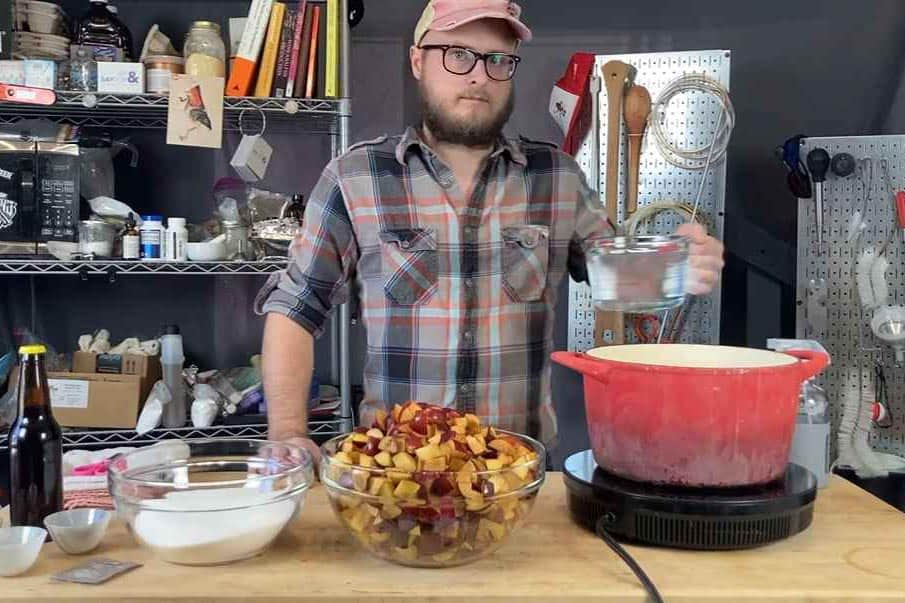
Next, we need to prepare our ingredients. That means boiling our water and chopping our plums. That means boiling our water and chopping our plums. Measure out 1 gallon of water and bring it to a boil.
As we wait for the water to heat up, you can go ahead and chop them into bite-sized pieces.
Step 3: Mix Your Ingredients
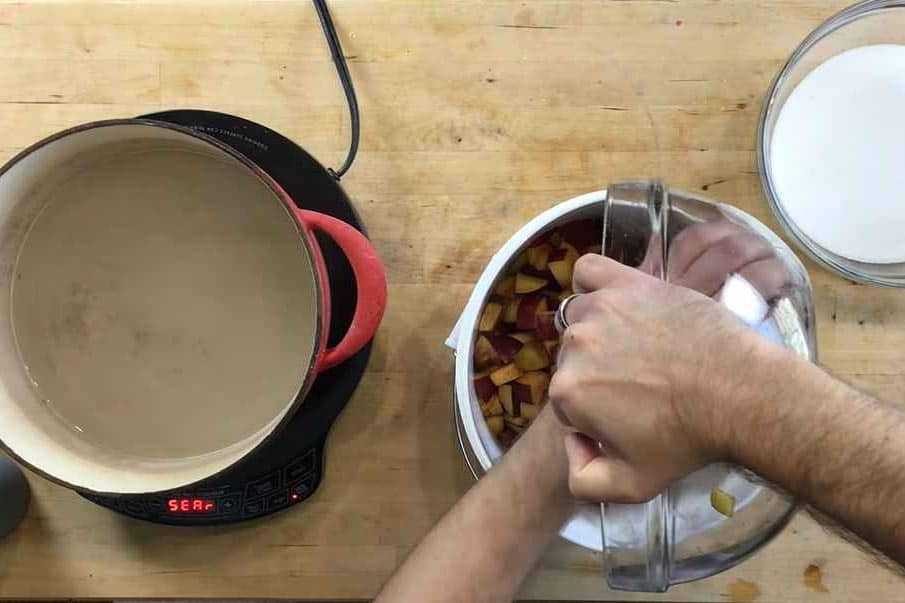
In your sanitized bucket fermentor, pour in your chopped plums. Spread them around so that they sit evenly in the bucket.
Sprinkle one teaspoon of your DAP yeast nutrients and an ⅛ teaspoon of grape tannins. Finally, pour in your grape juice concentrate.
Step 4: Pour in Your Hot Water and Granulated Sugar
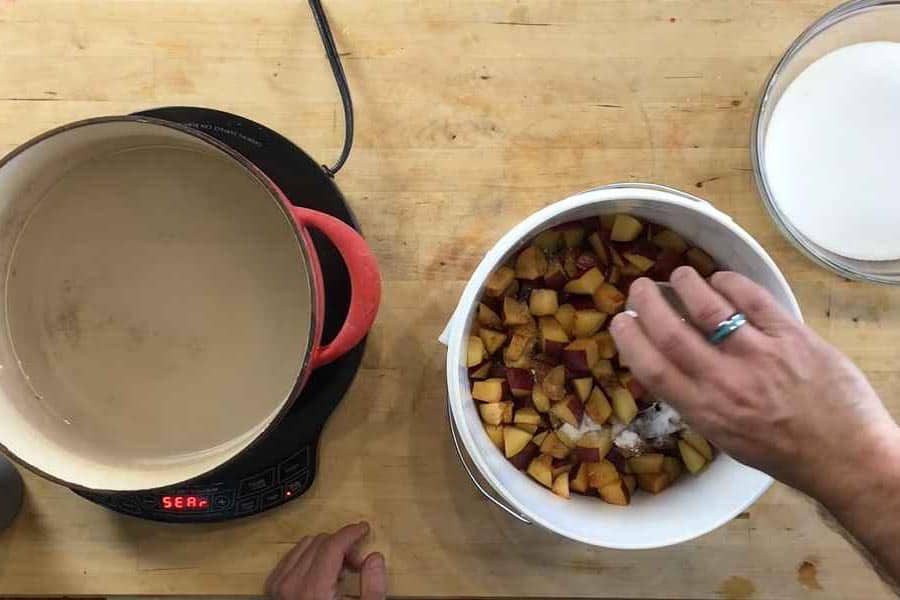
Remember the water we left on the stove? Let’s check on it. If it has started boiling, turn off the stove and pour it into the bucket fermentor along with the other ingredients.
With the water in, it’s time to pour in the granulated sugar (all 1lb 10oz of it). The hot water helps dissolve the sugar. But we’ll also lend a helping hand by stirring the mixture so that the sugar doesn’t settle at the bottom.
Step 5: Stir the Mixture of Ingredients
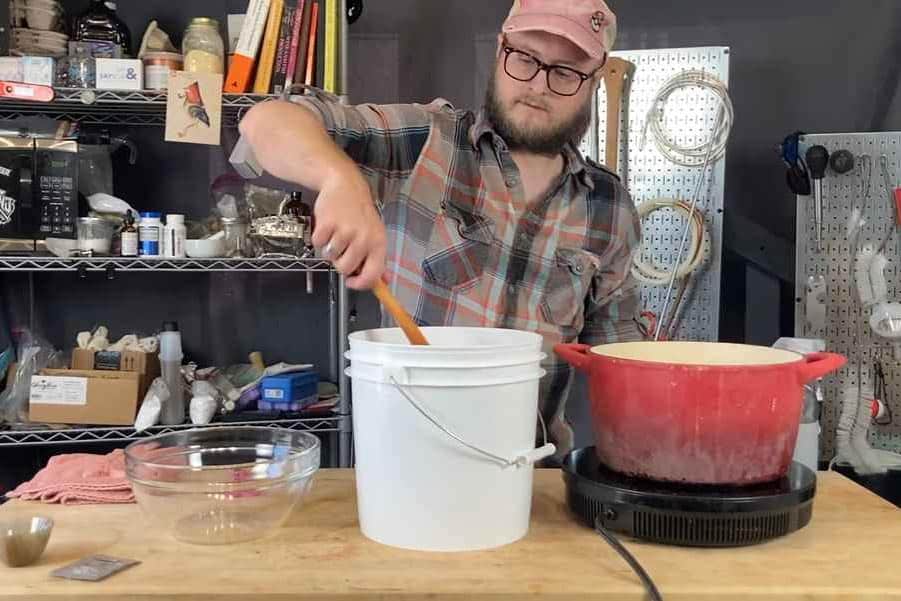
With a wooden spoon, stir the mixture gently. Once you’re confident that everything is mixed well, cover the bucket fermentor and let your special concoction cool to room temperature.
Step 6: Add Pectic Enzyme and Pitch Your Yeast
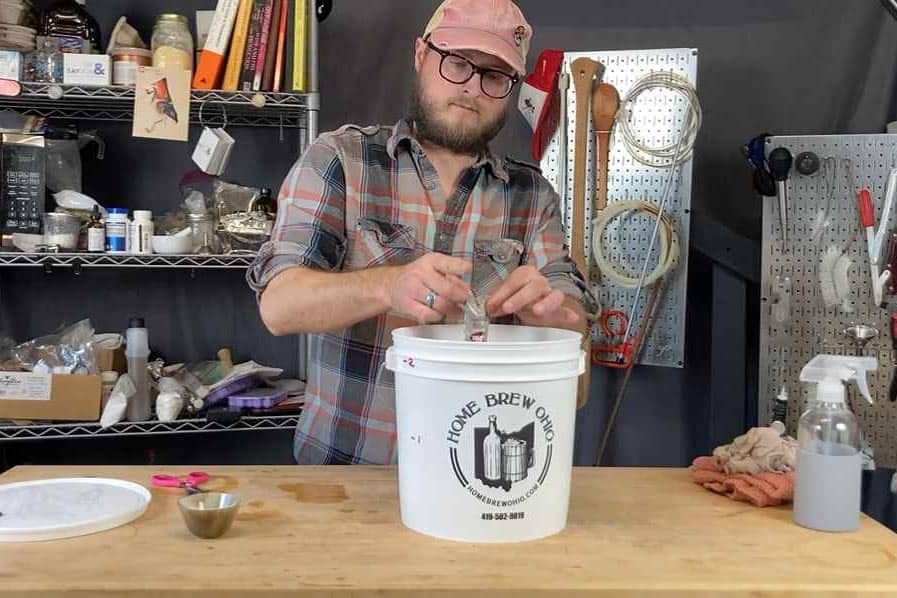
Before adding your pectic enzyme, ensure that the mixture has cooled to room temperature. Feel the temperature of the bucket with your hand.
Pectic enzyme is temperature-sensitive. It contains the enzyme Pectinase which denatures when subjected to heat. After the pectic enzyme, in goes the yeast. Tear open the packet and sprinkle your yeast.
Stir the mixture again and seal the bucket fermentor. This time, fix the airlock; we’ll let our concoction ferment for a couple of days.
Step 7: Fermentation
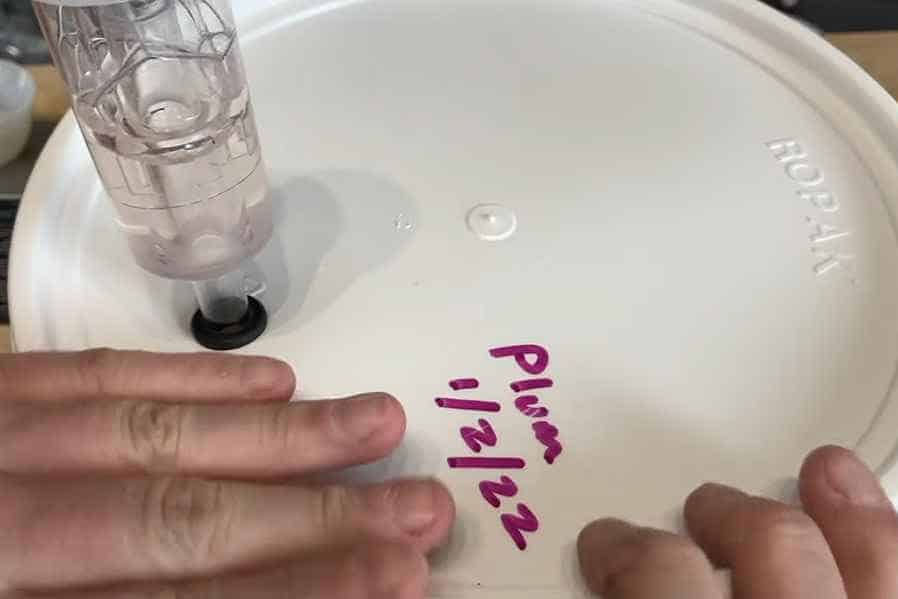
During fermentation, we need to stir the mixture from time to time. Every day (or two), open your bucket fermentor and stir the mixture. Also, take a gravity reading to gauge the fermentation process. Don’t forget to seal it shut when you’re done.
Step 8: Add Fermaid K
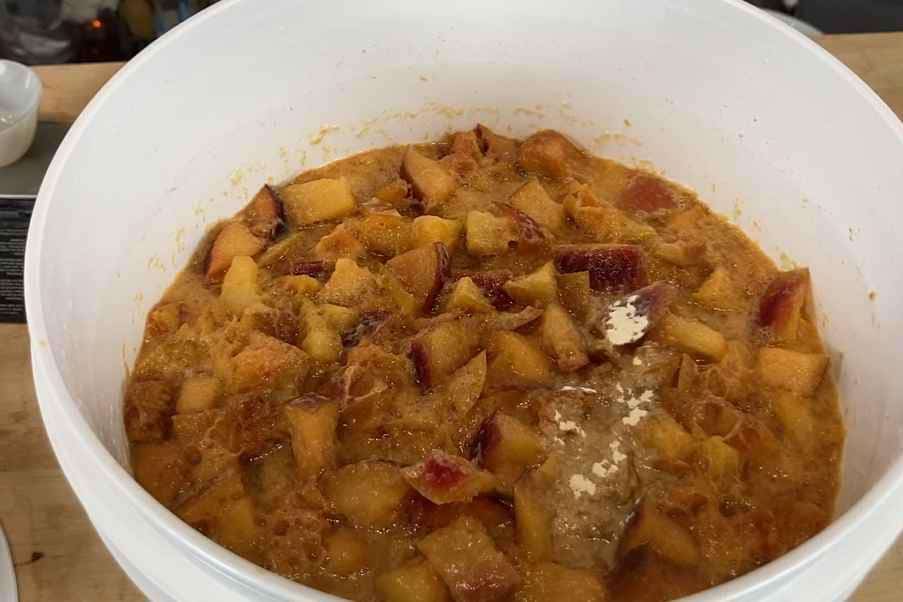
When you achieve a gravity reading of 1.060, add one gram of Fermaid K. Stir the mixture before sealing the bucket fermentor. Let the fermentation continue for another week and a half. Or until all the plums are spent.
Step 9: Cold-Crushing the Fermentation Process
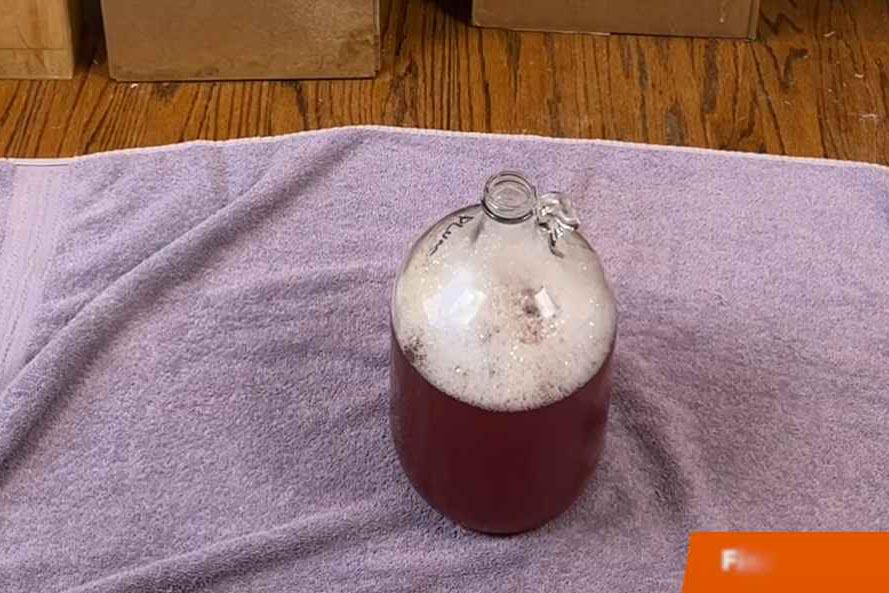
Transfer your wine to your glass fermentor. Place the fermentor in a refrigerator for a few days to cold crush the fermentation process.
Step 10: Bottling
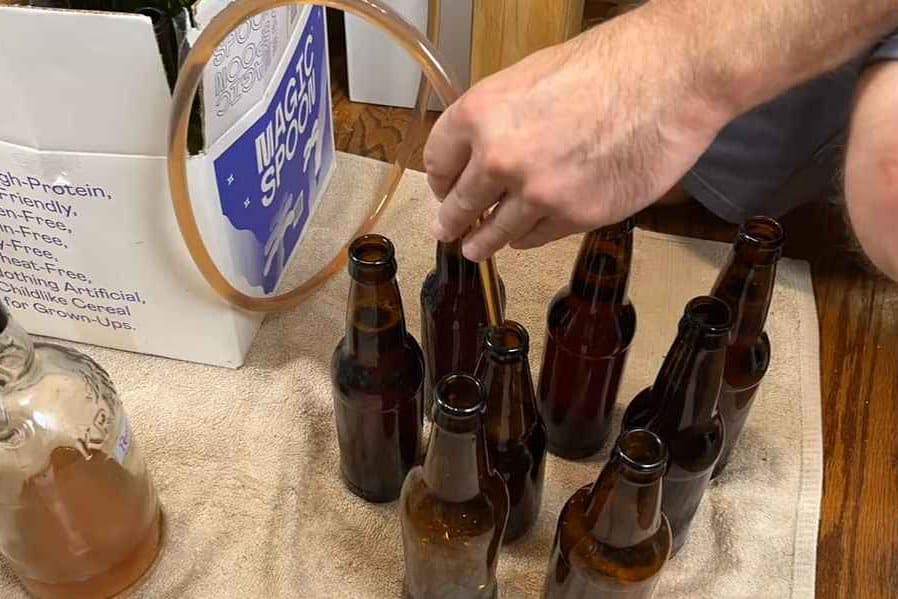
After a few days in the fridge, you can bottle your freshly-made plum wine. Sanitize your bottles and purge them with carbon dioxide. Carefully fill them with wine and seal them with bottle caps.
Now all that’s left is to enjoy the fruits (or plums) of your labor.
Tips and Tricks:Finding certain ingredients can be a challenge. White grape concentrate is one of those elusive ingredients. And you can go around this issue by making your own grape juice concentrate. How? Buy some grape juice and concentrate it by heating it. Simmering releases the water as vapor, leaving a more concentrated grape juice. Don’t go overboard with it. You may end up with caramelized grape concentrate.
Frequently Asked Questions
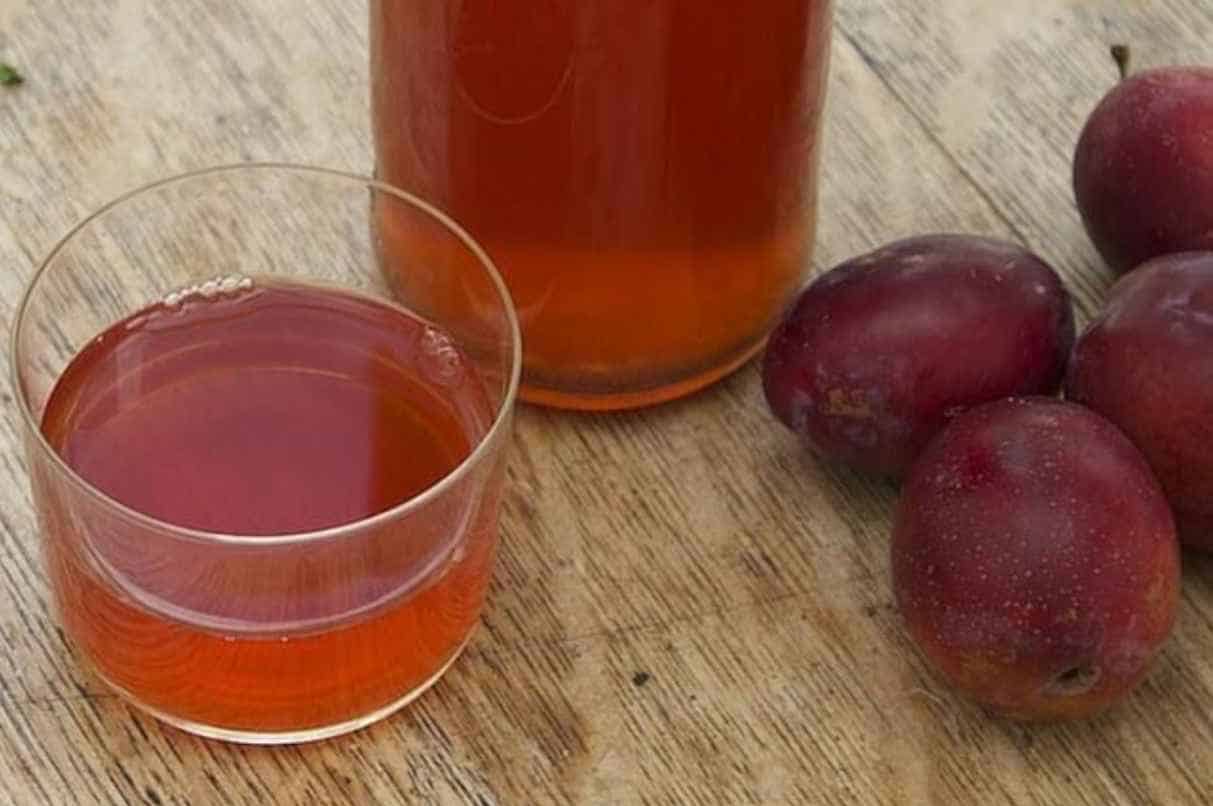
What Alcohol Can Be Made from Plums?
With plums, you can make plum wine and plum mead. Making plum wine is like brewing wine, except you’re substituting your grapes for plums. Plum wine is amber in color, a pigmentation it gets from the plum’s red skin.
Another brew you can make with plums is mead. Making mead is like brewing beer, except you’re using plums instead of grains. Check out this article to learn more about meads.
What Yeast is Best For Plum Wine?
Red Star Cote des Blancs is highly recommended for plum wines. It also works well with apples and pears. Red Star Cote des Blancs takes its time in fermentation. It’s slower than most wine yeasts because of its low tolerance for alcohol.
What Do You Use Plum Wine For?
Plum wine is a pleasant beverage, perfect for dessert. It smells like fresh plums and tastes sweet. Plum wine is the perfect beverage to wind down a meal. You can also pair it with your sweet desserts.
Final Thoughts
And that’s how you make plum wine. It’s the plum season, and there are plums everywhere. I know you have the brewing equipment. So, what are you waiting for?
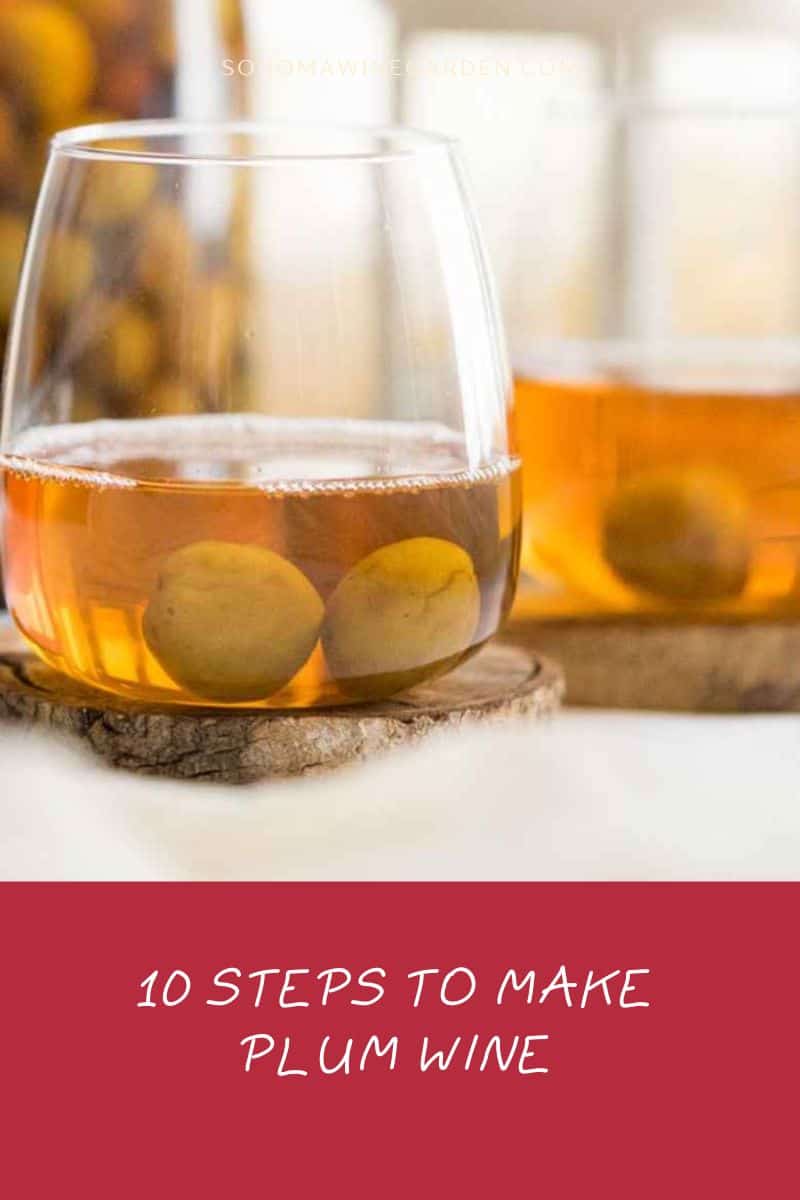
10 Steps to Make Plum Wine (Step-by-Step Guide)
Forget Sweet, We Like Our Wine Bone Dry
Ingredients
6 lbs Fresh Plums
12oz White Grape Concentrate
1 lb 10oz of Granulated Sugar
1 Gallon of Water
1 tsp Powdered Pectic Enzyme (Pectinase)
⅛ tsp Grape Tannin
1 tsp of Yeast Nutrient (Diammonium Phosphate or DAP)
1 gram Fermaid K
Lalvins DV10 Yeast
Directions
- Sanitize all your brewing equipment
- Chop your plums into bite-sized pieces and pour them into your bucket fermentor
- Once the mixture cools to room temperature, add one teaspoon of pectic enzyme to the bucket
- Add ⅛ teaspoons of DAP to the bucket
- Bring ¼ gallons of water to boil
- Add the boiling water to the bucket fermentor
- Add 1 lb 10oz of granulated sugar to the bucket
- Stir the mixture gently with a wooden spoon
- Cover the bucket fermentor with its lid and wait for it to cool
- Once the mixture cools to room temperature, add pectic enzyme and yeast
- Stir the mixture gently and seal the bucket with its lid
- Fit the airlock and let it ferment
- Stir the mixture every day (or two) and take gravity readings
- Once you achieve a gravity of 1.060, add 1 gram of Fermaid K
- Seal the bucket fermentor and let fermentation continue
- After a week and a half, transfer the wine to your glass fermentor
- Store it in a refrigerator for a few days
- Bottle your wine
[ratemypost]

As a homebrewer, Michael would get frustrated about the lack of brewing information on the internet. After hundreds of gallons of spoilt batches, Micheal had enough. And he founded Unknown Brewing as a resource for homebrewers.

